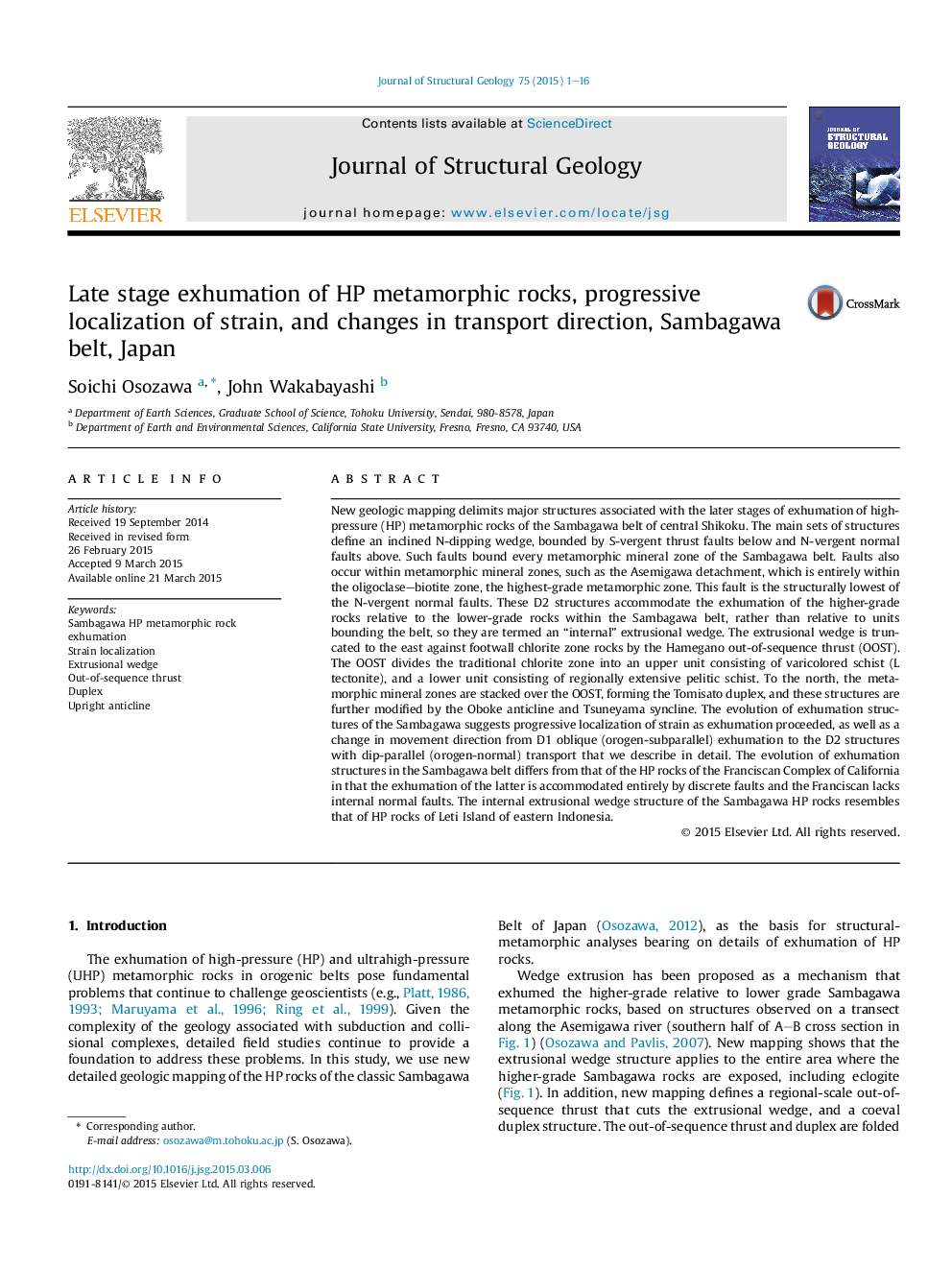| کد مقاله | کد نشریه | سال انتشار | مقاله انگلیسی | نسخه تمام متن |
|---|---|---|---|---|
| 6444792 | 1640505 | 2015 | 16 صفحه PDF | دانلود رایگان |
عنوان انگلیسی مقاله ISI
Late stage exhumation of HP metamorphic rocks, progressive localization of strain, and changes in transport direction, Sambagawa belt, Japan
دانلود مقاله + سفارش ترجمه
دانلود مقاله ISI انگلیسی
رایگان برای ایرانیان
کلمات کلیدی
موضوعات مرتبط
مهندسی و علوم پایه
علوم زمین و سیارات
زمین شناسی
پیش نمایش صفحه اول مقاله

چکیده انگلیسی
New geologic mapping delimits major structures associated with the later stages of exhumation of high-pressure (HP) metamorphic rocks of the Sambagawa belt of central Shikoku. The main sets of structures define an inclined N-dipping wedge, bounded by S-vergent thrust faults below and N-vergent normal faults above. Such faults bound every metamorphic mineral zone of the Sambagawa belt. Faults also occur within metamorphic mineral zones, such as the Asemigawa detachment, which is entirely within the oligoclase-biotite zone, the highest-grade metamorphic zone. This fault is the structurally lowest of the N-vergent normal faults. These D2 structures accommodate the exhumation of the higher-grade rocks relative to the lower-grade rocks within the Sambagawa belt, rather than relative to units bounding the belt, so they are termed an “internal” extrusional wedge. The extrusional wedge is truncated to the east against footwall chlorite zone rocks by the Hamegano out-of-sequence thrust (OOST). The OOST divides the traditional chlorite zone into an upper unit consisting of varicolored schist (L tectonite), and a lower unit consisting of regionally extensive pelitic schist. To the north, the metamorphic mineral zones are stacked over the OOST, forming the Tomisato duplex, and these structures are further modified by the Oboke anticline and Tsuneyama syncline. The evolution of exhumation structures of the Sambagawa suggests progressive localization of strain as exhumation proceeded, as well as a change in movement direction from D1 oblique (orogen-subparallel) exhumation to the D2 structures with dip-parallel (orogen-normal) transport that we describe in detail. The evolution of exhumation structures in the Sambagawa belt differs from that of the HP rocks of the Franciscan Complex of California in that the exhumation of the latter is accommodated entirely by discrete faults and the Franciscan lacks internal normal faults. The internal extrusional wedge structure of the Sambagawa HP rocks resembles that of HP rocks of Leti Island of eastern Indonesia.
ناشر
Database: Elsevier - ScienceDirect (ساینس دایرکت)
Journal: Journal of Structural Geology - Volume 75, June 2015, Pages 1-16
Journal: Journal of Structural Geology - Volume 75, June 2015, Pages 1-16
نویسندگان
Soichi Osozawa, John Wakabayashi,